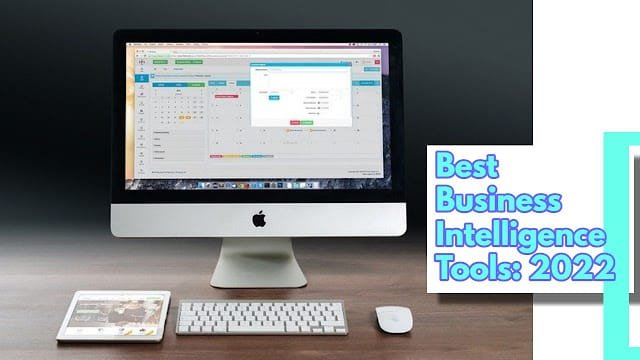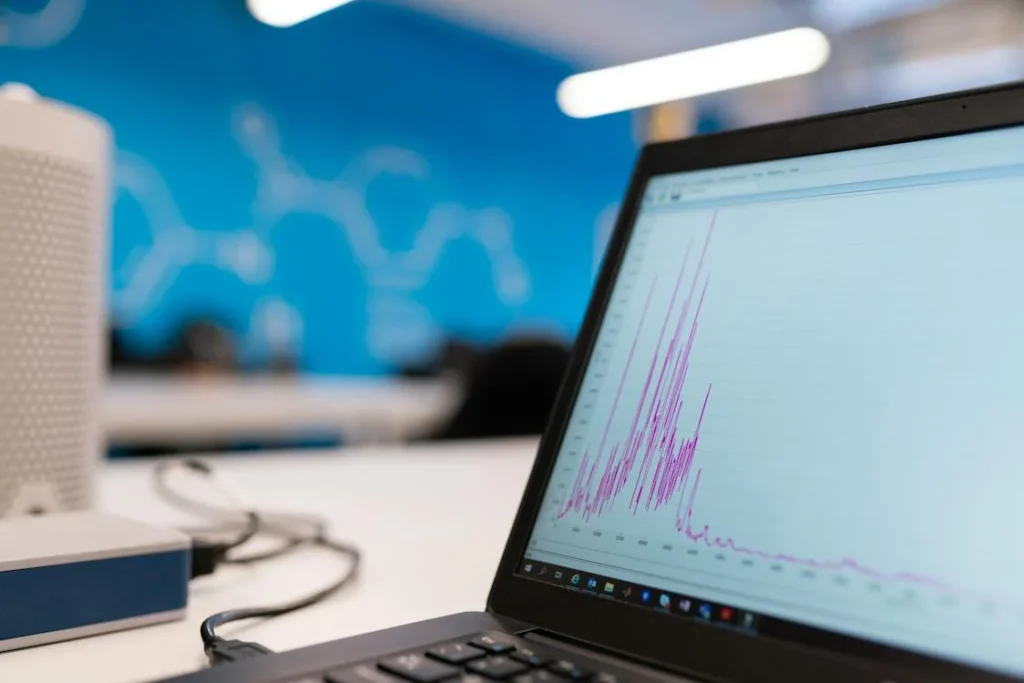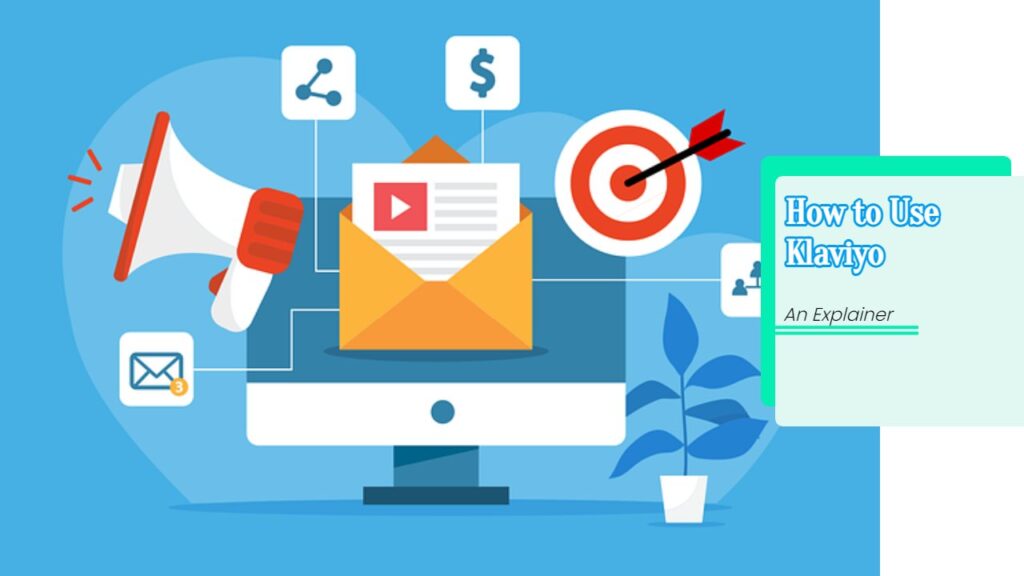Currently, businesses are facing a more competitive environment. Businesses are getting more data every day and they cannot afford to be late in making good use of them.
Business intelligence is the management of large sets of data to make sense out of it by providing insights and information to business owners and decision makers.
All this leads us to a lot of new business intelligence tools which will help you monitor your business on a day-to-day basis. In this post, we will look at five best BI tools in 2022 so that you can make the most out of your data collection and analysis efforts.
These five tools are the best in five different categories and are aimed at ensuring you can choose the best tool for the need that you have the most.
With that said, let’s begin!
- Related Read: BI tools are great when it comes to conducting market research. However, there are unique and specially developed market research tools available as well, which might be better for your requirements, if you wish to conduct a market study of your prospective customers or audience.
#1. Power BI – Most Powerful Business Intelligence Tool, Best for Large Enterprises
Power BI is a business intelligence tool that provides self-service analytics, visualizations and dashboards. The tool lets you quickly build reports, data models and dashboards to help you get more value and insight from your data.
It’s designed to be easy to use, allowing you to create and edit dashboards in minutes.
Features
Power BI provides real-time reporting so that you can monitor your business performance easily without any delay or lag time in between.
Users can create reports at any time with just a few clicks of their mouse. They don’t have to wait until they have completed all the steps needed before creating a report.
Power BI can be used on many devices: Desktop computers, tablets, laptops and smartphones.
Data Monitoring / Alerts: Users can monitor their data in real time by making use of insights such as KPIs (Key Performance Indicators). In addition to this, they can also receive notifications if there’s an issue with the data they have been analyzing.
Advantages that You Get with Power BI
Apart from this, there are many advantages of using this tool such as its ease of use and flexibility in designing graphs and charts which make it easy for the user to understand things better than other tools available out there in market.
It is integrated with Microsoft Office: The connection between Power BI and Microsoft Office allows you to create dashboards or reports directly within Excel, Word or PowerPoint.
It is free: You don’t have to pay for Power BI because this tool was designed by Microsoft so everyone can use it for free. However, you can upgrade to a premium license.
The main advantage of Power BI over other Business Intelligence Tools is its ability to connect with many different types of data sources like SQL Server, Oracle Database, MySQL Database etc., which makes it easier for the users to get access to their data when they need it most.
This makes it ideal for large enterprises that need to connect their data sources in order to gain greater insights into their business processes.
Another advantage of Power BI is its ability to connect with popular social media platforms like Facebook, Twitter and Instagram; allowing users to incorporate social media into their reports in order to gain greater insights into their audience needs.
You can also connect to over 50+ data sources including Salesforce, Google Analytics, Zendesk, Mailchimp, Marketo and more!
- Related Read: You can use this tool to try out Porter’s Five Forces analysis.
#2. Tableau – Best Business Intelligence Software for Data Discovery
Tableau is the best Business Intelligence Tool for data discovery and visualization. Tableau was developed by the Tableau Software Company to help the BI community integrate business intelligence (BI) into their work process.
Tableau is an analytics software that allows you to connect to a variety of data sources and visualize them in powerful ways, which helps you to see your business data in a new light.
Features
Tableau is an easy-to-use, drag-and-drop software tool that enables users to create beautiful visual reports using only a few mouse clicks.
Tableau’s intuitive interface makes it easy for nontechnical users to create interactive data dashboards in minutes. Users can also connect to multiple data sources, generate automated alerts, and track changes in their data over time with Tableau’s built-in analytics features.
As a result of this ease of use, Tableau has become one of the most popular tools among BI professionals, who are looking for an easy way to put data into context so they can make informed decisions quickly while reducing costs and increasing productivity.
It’s available on any device. Tableau works on any device with an internet connection, including laptops, tablets and smartphones.
USP that Tableau has compared to other Business Intelligence Software
Tableau offers several different types of visualizations, but one of its most popular is the dashboard, which is a type of presentation used by many companies today.
Dashboards are useful because they allow users to view multiple pieces of information from different angles at once.
For example, if your company sells widgets, you might have several widgets sales reports on one dashboard so that you can easily compare them side-by-side against each other instead of having to go through each report individually.
Tableau offers a variety of tools that allow you to analyze your data (data analytics) and present it in an easy-to-understand format. Tableau is known for its ability to help people make fast decisions based on their company’s data without having to manually enter or manipulate information.
The software also provides a wide range of prebuilt visualizations that can be used as starting points for creating your own visualizations.
The ability to create interactive visualizations using JavaScript makes it easier for users to explore their data in real time.
This feature makes it possible for them to examine individual pieces of information or make comparisons between two different sets of figures at once.
Social media integration allows users to post their visualizations on Facebook or Twitter, which makes them more visible to potential customers or colleagues who may find them interesting or useful.
In addition, this feature also allows users to easily share their work with others via email or chat conversations with colleagues.
#3. Sisense – Best BI tool for the Average Joe
Sisense is a business intelligence tool that allows you to build intelligent data sets, visualize them and share them with others. With its powerful data visualization capabilities, it helps you gain insights from your data faster than ever before.
Sisense’s goal is to simplify the process of building an intelligent data set by providing a single platform for managing all your BI needs. You can use it to create beautiful dashboards and reports for your customers, employees, partners and more — all from one place.
Sisense’s goal is to simplify the process of building an intelligent data set by providing a single platform for managing all your BI needs.
Sisense has been built from the ground up to be easy to use, provide accurate information, and make it easy for users to access that information. Sisense is also very flexible so you can create your own dashboards and reports in any format that you like.
Features
Sisense provides a variety of features that allow you to:
- Build intelligent data sets from any source (e.g., Excel, SQLite).
- Create visualizations that are easy to understand and share with others (e.g., SharePoint Lists).
- Integrate with other apps such as Salesforce or Google Drive so they can easily be shared between users or departments within your organization (e.g., PowerBI).
Sisense provides several different ways for users to access their data including reports, data cubes, visualizations, widgets, and graphs. Users can also customize any of these tools by adding their own content.
This means that every user will have a unique experience when using Sisense because they will see something different than someone else who uses Sisense.
Sisense includes a drag-and-drop interface which makes it easy for users to create new reports or data cubes without having to know any programming languages or programming language syntaxes (like ASPX or HTML).
This makes it easier for non-technical people to use Sisense because they don’t need to worry about learning how to program in another programming language before they can start creating their own reports or data cubes using Sisense’s drag-and-drop interface.
Sisense also has a built-in reporting engine which allows users to easily create reports based on predefined filters or parameters. You can also use this feature when creating custom reports by simply dragging and dropping fields from other reports into the new report so that they appear as part of it instead of being seen as two separate entities.
Advantages of Sisense that makes it the Best Overall BI tool
#1. Sisense has a very intuitive user interface, which makes it easy for users to navigate the tool and find what they need quickly. The drag-and-drop interface makes it easy for users to build their own dashboards and reports, as well as add data from other applications into Sisense.
#2. Sisense has a robust set of prebuilt visualizations that can be easily used by business users with little training or support from IT support staff. This makes it easier for business users to get up and running in minutes, instead of having to spend hours learning how to use the tool.
#3. Sisense offers many integrations with other applications and services, including Google Analytics, Google Sheets and Excel spreadsheets, Salesforce CRM and more! These integrations make it easy for users to pull data from various sources into Sisense without having to manually export or copy data over from another source first (which can be time consuming).
#4. Sisense allows you to create flexible dashboards that can be customized by users. You can also create custom reports on the fly.
#5. One of the best things about Sisense is its ability to connect with other systems such as Salesforce or Sales Grid so you can have a single platform where all your data can be accessed from multiple sources.
- Side Note: Using these tools can help you prevent from falling into marketing myopia when you are doing your 7 marketing functions.
#4. SAP Business Intelligence – Best Business Intelligence Tool for Data Reporting
SAP Business Intelligence (BI) is a platform for data analysis and reporting.
Sisense can be used as an alternative to SAP Business Intelligence, but it is not the best BI Tool for data reporting.
SAP Business Intelligence is the best Business Intelligence tool for data reporting. SAP Business Intelligence provides you with various reports and dashboards that can be used to get insightful data about your business.
You can use these reports and dashboards to get an overview of your business. This will help you in making decisions based on the data that you have collected from various sources such as sales trends, customer satisfaction surveys, market analysis etc.
Features:
SAP Business Intelligence is a tool for data reporting which allows users to create graphs, charts, tables and dashboards using different modules which are provided by the software package.
These Modules include:
#1. Report Builder:
This module allows users to create their own report designs from scratch or import existing reports from other sources like Excel sheets or PDF documents without any need for manual coding or programming skills.
#2. Dashboard Designer:
Dashboard Designer helps users create templates for their dashboard designs as well as make changes in their existing screens so that they can be customized according to their needs.
#3. Data Marts:
This module allows users access all kinds of data stored on the server
SAP Business Intelligence uses SAP HANA technology which has been designed with scalability in mind and it allows you to scale up or down based on your needs. It also allows you to manage multiple databases on one server without affecting each other’s performance.
You can even use advanced SQL queries to extract data from your database using this tool which makes it more valuable than any other BI tool out there.
USP of SAP Business Intelligence that Makes it the King in Data Reporting
The primary benefit of SAP Business Intelligence is that it provides a single platform for capturing all types of data from disparate sources inside and outside the organization.
The software also provides users with easy access to relevant analytical reports, dashboards, scorecards and other visualizations that enable them to quickly spot trends, spot problems with such ease, that is unparalleled by any other BI tool out there.
#5. Looker – Best BI tool for Users interested in Analyzing Real-time Data
Looker is the best Business Intelligence Tool for analyzing real time data. Looker has a simple interface, which makes it easy for non-technical people to use.
Its pricing plans are available on request, which I, as a user dislike, as it creates quite a large information asymmetry (You never know what the original cost or price is and whether you are getting a great deal or are basically getting cheated off!).
Anyhow, Looker is an online platform that allows users to analyze and visualize data from many different sources, including email, social media, text messages, customer support tickets and web traffic.
Looker’s user interface is clean and intuitive. You can choose between several different color schemes and customize different aspects of the interface with themes or style sheets.
Once you’ve created an account and logged in, you’ll be able to access your dashboard where you can view your data in real time or download it as a CSV file so that you can analyze it offline later on.
The dashboard itself looks very similar to Google Analytics (the popular web analytics tool) but with more bells and whistles added in: charts showing how many unique visitors came from each source over a period of time; pie charts showing how much money each source generated for your company; histograms etc.
Looker also allows users to connect with other databases and applications via APIs, which makes it easy for companies to integrate their existing processes with Looker’s tools.
Features
Looker has a variety of features that help you make better decisions. You can use Looker’s dashboards and reports in order to gain an understanding of your company’s current performance. You can also create custom dashboards, which allow you to display data in a way that suits your needs.
Looker offers two main ways of accessing data: through SQL databases or through Looker’s API. The first method allows you to query multiple tables at once while the second method allows users to interact with a database via JavaScript code. Both methods offer different benefits depending on what type of access you need from Looker.
SQL databases are ideal for those who want more control over their data but aren’t able to learn programming languages such as Java or Python. These databases allow users access to multiple tables at once, so they can take full advantage of their analytical abilities without having to learn code first.
The other option is the API method, which allows users access through JavaScript code instead of SQL queries.
Wrapping it Up
These tools are the best at each of their respective tasks. In order to not give you the same and baseless 10+ list of tools, we did 20+ hours of research and also asked several business owners for recommendations regarding the tools that they used and why they liked those tools.
If you find try out these tools and find them useful, do let me know in the comments. Also, feel free to give this article a share!
Read Next:
- How to Create a Law Firm Marketing Plan
- Law Firm Marketing Report: How Law Firms across the World are Marketing Themselves
- Best Sales Outreach Tools



















